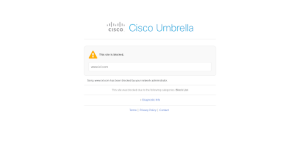The Elephant in the Classroom

Some people believe that the AI’s are helping with cheating and will eventually take over the internet.
April 21, 2023
Dear Teachers,
We’ve discovered a new, ingenious, yet sly way to cheat: AI language models. In a world where you may be looking for passed notes under a table, we’re light years ahead of you.
The most useful AI we’re hiding from you is probably GPT-4, the smartest, most advanced GPT model ever, and we’ve found a way to use it to our advantage on everything from quick paragraph assignments, to MLA citations, to full-length reports. When you were a kid, you may have copied homework on the playground before class. We’re copying complete essays off Bing.
Gone are the days of folded notes during tests or surfing Google for quiz answers. Now, students from the middle school level and beyond are talking to tech for a little extra help.
Here’s how it works: we can type in a simple prompt, and ChatGPT responds with an answer in seconds. It’s like having a virtual tutor at your fingertips, except we’re not exactly using it for tutoring.
We probably know what you’re thinking. Technology reached its peak with Google, Wikipedia, and Quizlet. Kids nowadays only need monitoring with the same old platforms that were popular when Obama was president. Wrong. OpenAI, the company that created ChatGPT, recently introduced its fourth AI model. It has been conquering SAT and AP exams like a testing prodigy. With its updated abilities, GPT-4 has taken 15 AP exams with an wild 60% of those tests resulting in a perfect score.
Past versions of chatbot blueprints from OpenAI haven’t been as smart, including the first Generative Pre-trained Transformer (GPT) model. GPT-1, released in 2018, didn’t have much knowledge, and it would pretty often repeat text when being asked to respond to a question or prompt regarding a subject outside of its digital brain. We tried to make it work, but turning in one of those assignments would’ve tanked our grades.
The second GPT installment was released in 2019. GPT-2 could pull from a far larger pool of knowledge than its predecessor. Now we were talking. It was able to process language and provide a nearly human-like response. One of its faults was that it couldn’t respond to prompts that required a rational answer. It also couldn’t produce a longer response without losing focus between paragraphs. Basically, it went off topic a lot. But it was getting closer.
GPT-3 emerged in 2020. It took a big leap beyond its digital dad. GPT models from OpenAI developed from language models to code processors and could even create some pretty cool art. Version 3 was able to write several paragraphs that made sense together. But, it would also generate offensive, biased, or inappropriate responses. With some editing, we began to use this version. If you assigned a paragraph or an essay, you may have already met GPT-3.
GPT-4 is the latest model from OpenAI, recently released on March 14. While its abilities have not yet been released to the general public on OpenAI, it has merged with the search engine Bing, creating Microsoft Bing Chat. It’s not only able to respond with text but also multimedia such as photos. It can even “remember” information from previous chats with a user. Its database is far more advanced than all of its previous models.
Each of these GPT prototypes are also a foundation for other AI models including as DALL-E, that can respond to a prompt with an image, and ChaosGPT, which is actually intending to blow up the world. Constantly fed information from websites, books, and articles, GPT continues to ‘grow’ in its AI understanding. It can recognize errors and correct them. It has even begun to have a dialogue with itself.
There is little doubt that future OpenAI models will become even stronger than GPT-4, opening up the potential for wild innovation unlike anything our world has ever known. Good luck assigning old-school homework. We have a brilliant study buddy who will help us conquer just about anything.
(This article was written entirely by seventh graders, no AI!)





